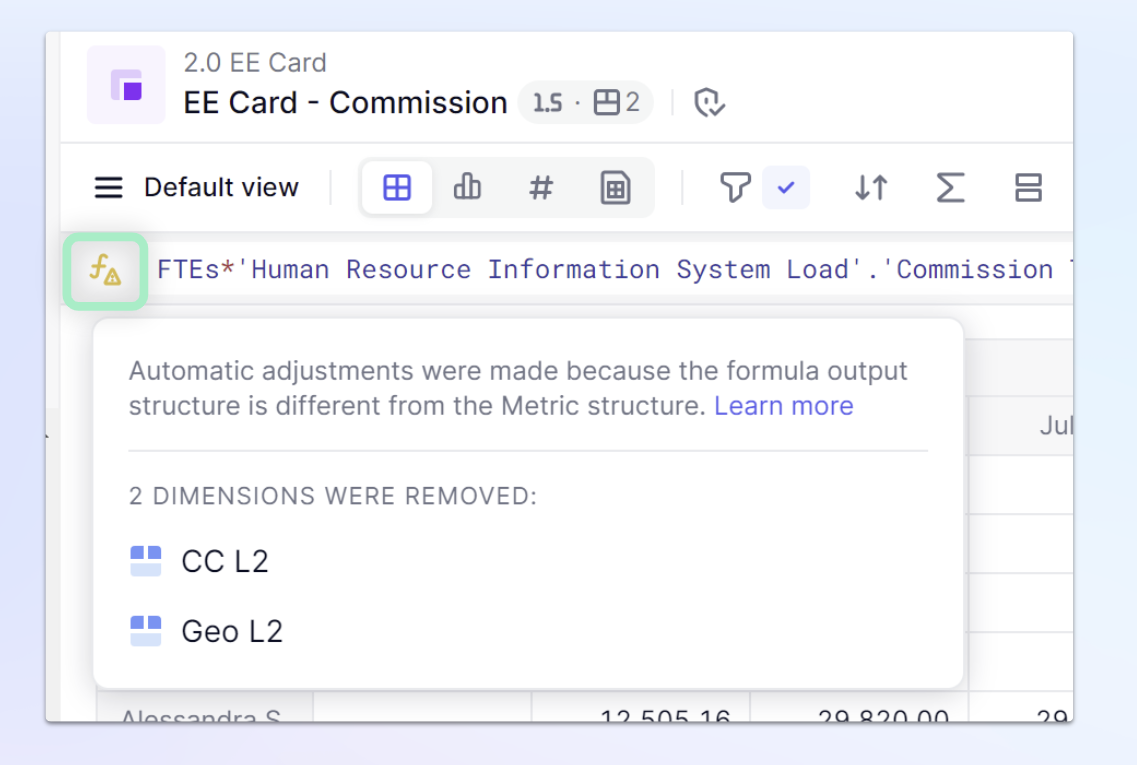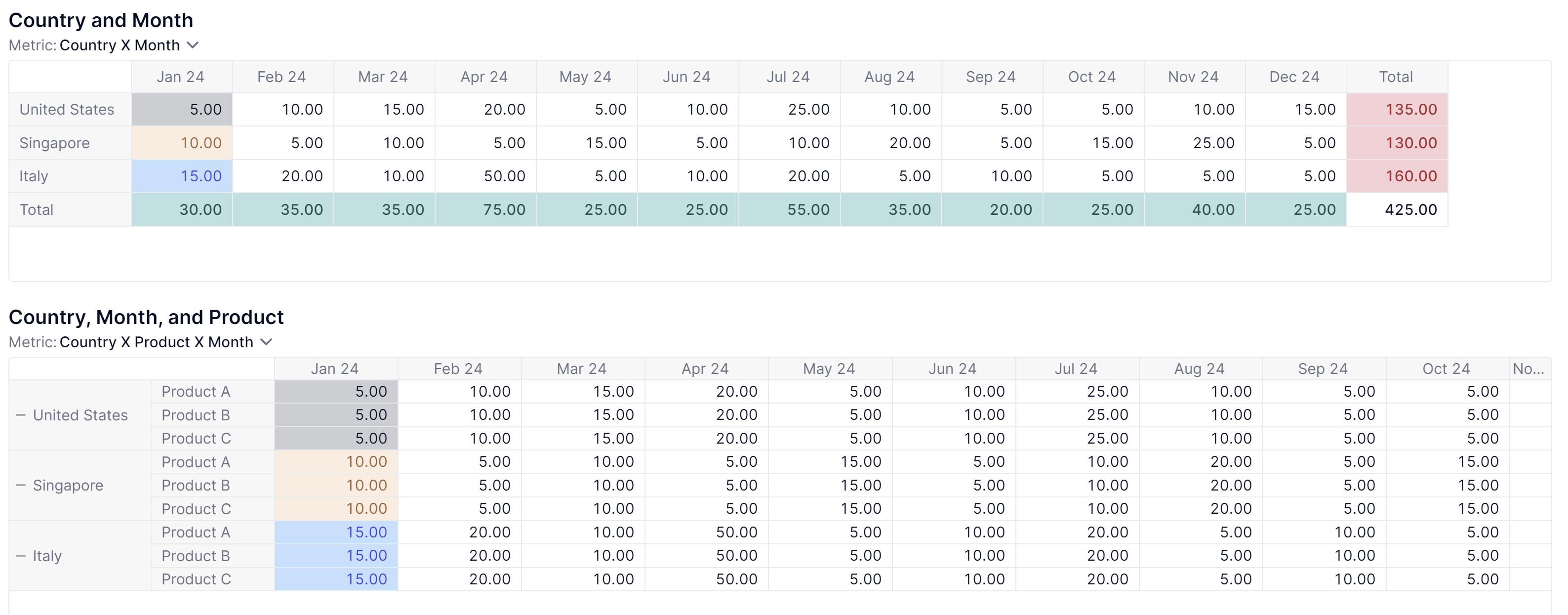When there is a discrepancy in the dimensions included in your formula and the Metric structure, a warning is displayed to show the adjustments that were made. This article discusses the outcome of the automatic adjustments.
Table of Contents
What is the dimension alignment indicator?
The dimension alignment indicator feature is the warning icon next to the formula bar turns yellow when there is a discrepancy between the dimensions in a formula’s output and the dimensions that are in the Metric.
For example, if the formula in your Metric references data that is by Month and Product and your Metric’s structure is set to only Product, there is a discrepancy.
The same could be set if the formula’s output is only Product but your Metric has both the Month and Product dimensions as the structure. In both cases, the formula’s output dimensions do not match the Metric’s structure.

How does it work?
When a discrepancy is detected the icon next to your formula bar turns yellow, when hovered over a message appears “Automatic adjustments were made because the formula output structure is different from the Metric structure.” Below that part of the message there will be more information to include if dimensions needed to be added and or removed.
In both cases, the data values are adjust by either spreading them across added dimensions or providing totals from removed dimensions.
It is possible to have instances where some dimensions needed to be added and others removed.
When Adding a Dimension
Sometimes your Metrics have dimensions used in their structure that are not part of the output of the formula.
For example, if your formula’s output is dimensionalized by Month and Country but your Metric’s structure is Month, Country, and Product. The Product dimension will be automatically added to the formula’s output to match the Metrics stucture.
This is done by using the same behavior as [ADD Constant: Dimension] modifier which essentially adds the dimension and adds the values consistently across them.
Example of Adding a Dimension

In this example, you'd see a Metric with Country and Month at the top. The Metric below has a structure of Country, Month , and Product. The Country, Month and Product Metric’s formula references the Metric above by and therefore the formulas output is by Country and Month.
Because Products was not included in the output of the formula, it was automatically added. Once it adds the Product dimensions, it will use the Constant allocation method, meaning that the value you will be applied consistently across all products.
For example , look at the Country and Month Metric and find the cell for the United States in Jan 24, the value is 5, in the Country, Month and Product Metric, you can see that same value of 5 was added to each of the different products consistently.
When adding a formula that does not have any dimensionality such as TRUE or BLANK, the indicator will appear because it has added the dimensions of the Metric to account for all cells.
When Removing a Dimension
A dimension is removed when that dimension isn’t part of the Metric structure but is referenced or included in the formula.
For example, if your formula’s output is dimensionalized by Month and Country but your Metric’s structure is just Product. The Month dimension will be automatically removed and the totals are taking the removed dimension.
This is done by using the same behavior as [REMOVE SUM: Dimension] which removes the dimension and sums the value from that dimension .
In this example, you can see the Metric on the bottom has the Country and Month dimension as its structure. This will be our source Metric, or Metric that will be referenced by the two Metrics above. The two different Metrics above have one by Country and another by Month. Both Metric’s at the top have the same formula referencing the Country and Month Metric, therefore there will be a discrepancy in formulas output and their structure.

The formula indicator shows the following for the Country Metric
“Automatic adjustments were made because the formula output structure is different from the Metric structure. 1 dimension was removed- Month”
The formula indicator shows the following for the Month Metric
“Automatic adjustments were made because the formula output structure is different from the Metric structure. 1 dimension was removed- Country”
In both of these examples, the data from the removed dimensions is summed and that value is provided. You can see for the Months Metric its taking the total or summed value for each month, highlighted in green. In the Country Metric, its taking the summed value across every month, highlighted in red.
You can adjust the dimensionality of all of these formula outputs by using Modifiers, to learn more about this check out the Source to target dimensionality and when to use Modifiers article.
🎓 To learn more about using the Dimension Alignment Indicator and Source to Target Mapping, visit our Academy courses on Work with Dimensionality in Formulas and the Interactive Source to Target Mapping Tool.



